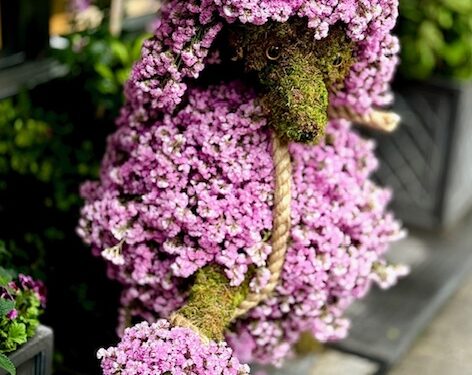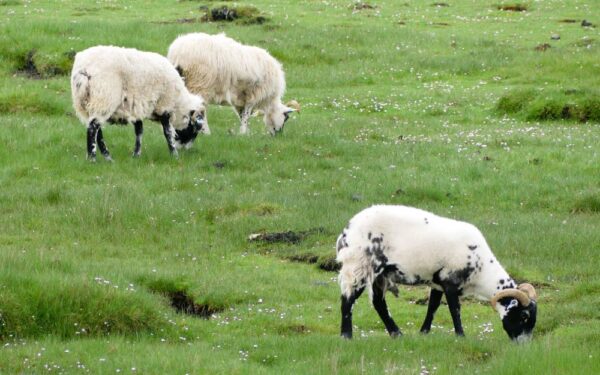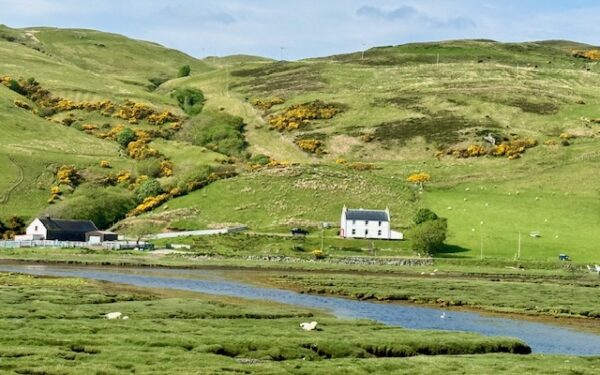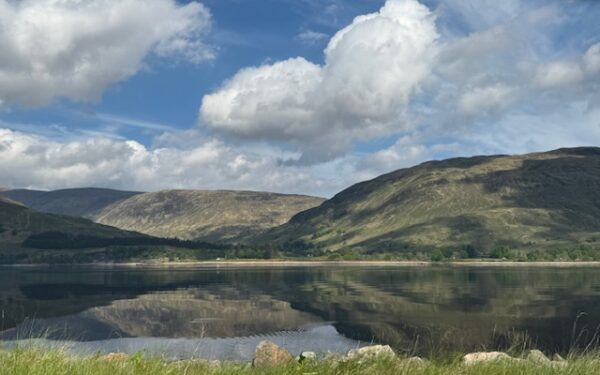“In Britain, there are springs adorned with sumptuous splendors for the use of mortals Minerva is the patron goddess of these.” Solinus 3rd century AD
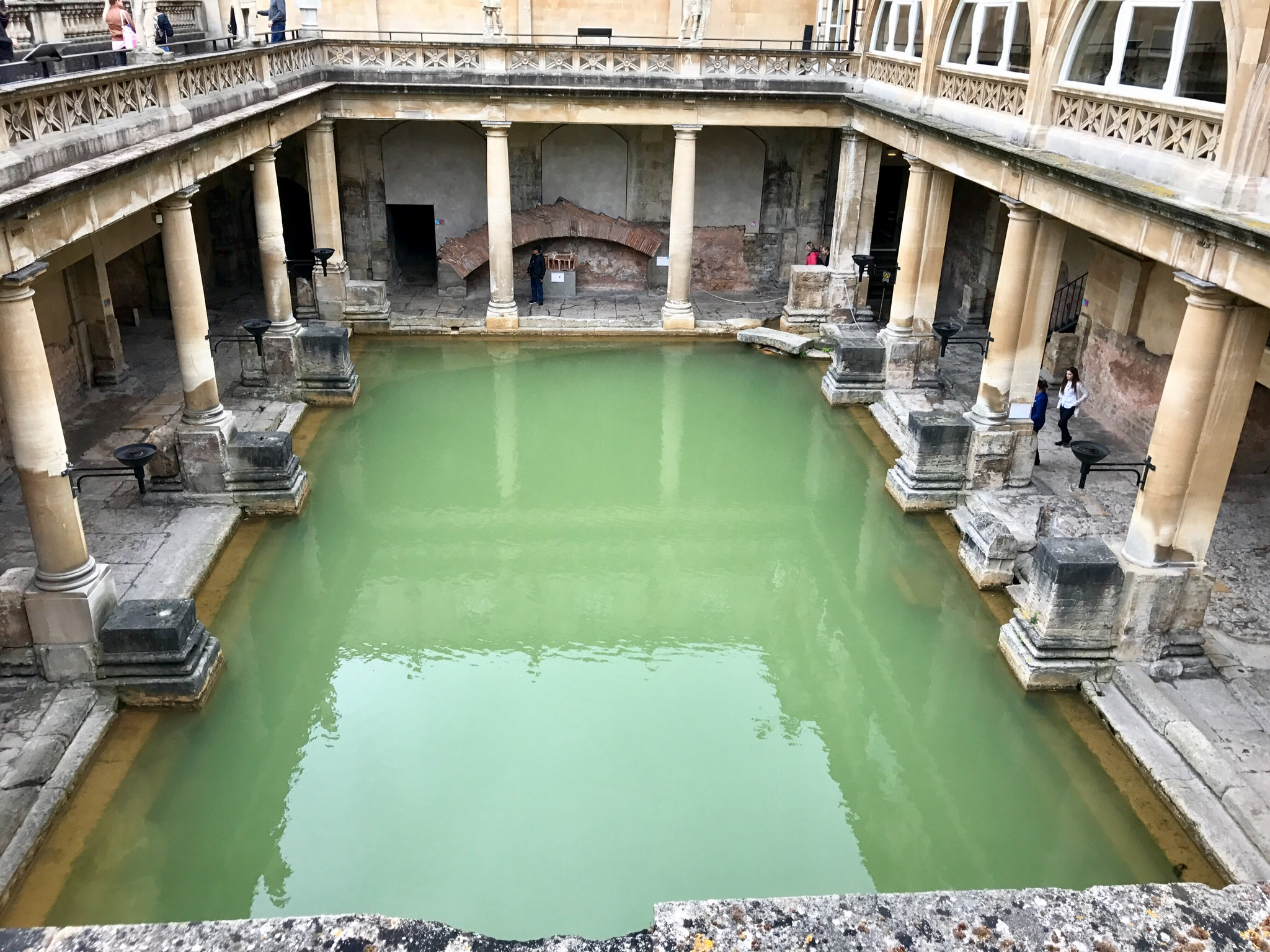
Mar 31, 2017
We woke up refreshed this morning and ready for our next exploration, but first, we had to drive to the city of Bath from Bristol, think of it as the 405 down single lane roads … it took us an hour to go about 15 miles.
I’ve been to the Bath Roman Museum several times prior, but they have made a few changes to the flow of the exhibition, signage and display, and the addition of digital enhancements. I was as in awe of it all as was David.
Bath is about 97 miles west of London. The city became a World Heritage Site in 1987. The city became a spa with the Latin name Aquæ Sulis in 60 AD when the Romans built baths and a temple in the valley of the River Avon, although hot springs were known even before then.
Archaeological evidence shows that the site of the Roman baths’ mainspring may have been treated as a shrine by the Britons, and was dedicated to the goddess Sulis, whom the Romans identified with Minerva; the name Sulis continued to be used after the Roman invasion, appearing in the town’s Roman name, Aquæ Sulis (literally, “the waters of Sulis”). Messages to her scratched onto metal, known as curse tablets, have been recovered from the sacred spring by archaeologists. The tablets were written in Latin, and cursed people whom the writers felt had wronged them. For example, if a citizen had his clothes stolen at the baths, he might write a curse, naming the suspects, on a tablet to be read by the goddess.
A temple was constructed in AD 60–70, and a bathing complex was built up over the next 300 years. In the 2nd century, the spring was enclosed within a wooden barrel-vaulted structure that housed the caldarium (hot bath), tepidarium (warm bath), and frigidarium (cold bath). The baths have been modified on several occasions, including the 12th and the 16th century. The spring is now housed in 18th-century buildings.
The museum houses artifacts from the Roman period including objects which were thrown into the Sacred Spring, presumably as offerings to the goddess. These include more than 12,000 Roman currency coins which is the largest collective votive deposit known from Britain. A gilt-bronze head of the goddess Sulis Minerva, which was discovered nearby in 1727, is displayed.
The late 19th century carvings of Roman Emperors and Governors of Roman Britain line the terrace overlooking the Great Bath. The water that flows through the Roman Baths is considered unsafe for bathing, partly due to its having passed through the still-functioning original lead pipes.
David decided he can do with one less church so we skipped the Bath Abbey founded in the 7th century and rebuilt in the 12th and 16th centuries.
Our next stop – the Bath Fashion Museum, a history of fashion in 100 very well-curated selections from the oldest item – a 16th-century nightshirt to an Alexander MacQueen cellophane dress.
In the early 18th century, Bath had become perhaps the most fashionable of the rapidly developing British spa towns.
On our way to our afternoon tea, we explored the Circus area which consists of three long, curved terraces designed to form a circular space or theatre intended for civic functions and games. It was modeled after the Coliseum in Rome. The three façades have a different order of architecture on each floor: Doric on the ground level, then Ionic on the piano nobile, and finishing with Corinthian on the upper floor, the style of the building thus becoming progressively more ornate as it rises.
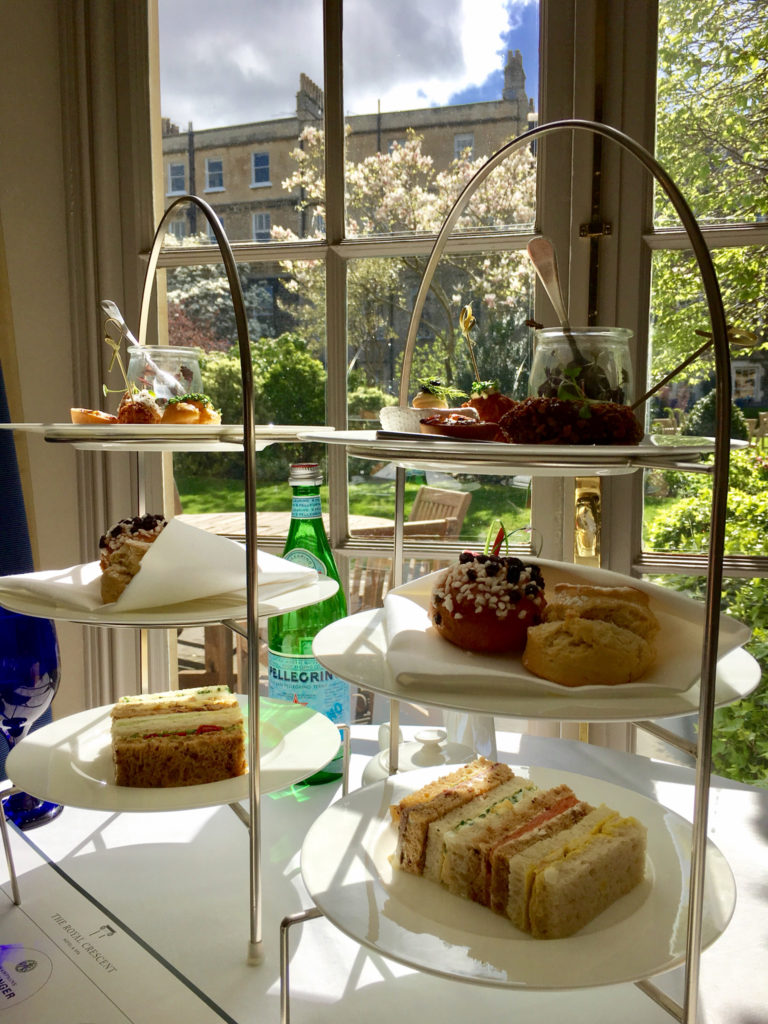
The most spectacular of Bath’s terraces is the Royal Crescent, and this is the location of the Royal Crescent Hotel housed in an elegant 18th Georgian building. On our first vacation, we had Afternoon Tea at the Peninsula in Hong Kong, so it’s now become our tradition. The service and delicacies of the items served were an experience in classic elegance and exceptional service in an enchanting setting overlooking the garden.
Next stop hanging out with The Boys…….our drive will take us again through the idyllic country side of southwest England until we reach the sea.
Torquay is a seaside town in Devon, part of the area of Torbay, adjoining the neighbouring town of Paignton on the west of the bay and across from the fishing port of Brixham to what now is being called the “English Riviera.”
The area comprising modern Torquay has been inhabited since Paleolithic times. Hand axes found in Kents Cavern have been dated as 40,000 years old and a maxilla fragment, known as Kents Cavern 4, may be the oldest example of a modern human in Europe, dating back to 37,000–40,000 years ago.
Roman soldiers are known to have visited Torquay during the period when Britain was a part of the Roman Empire, leaving offerings at a curious rock formation in Kents Cavern, known as “The Face”. No evidence has been found of Roman settlement in the town.
The first major building in Torquay was Torre Abbey, a Premonstratensian monastery founded in 1196. The mild climate (for the UK) attracted many visitors who considered the town a convalescence retreat where they could recover from illness away from the cold and cloudy winters of more northerly or easterly locations. 1902 saw the first advertising campaign to market Torquay to the summer tourist. Coastal towns are now more popular for short stays as part of a touring holiday. Recently, Torquay has seen an increase in foreign visitors, and is a major destination for foreign exchange students who come to the town to learn English in summer schools.
Built up by wealthy Victorians who, influenced by their travels around the Mediterranean, built large villas with Italianate features and towers. There are many pine trees, Bay bushes and trees (Laurus nobilis), various palm tree species and Phormiums. Cabbage trees or “Torbay Palms” are a notable feature of the area; the trees were introduced into the area from New Zealand in 1820 and since then have flourished. The vegetation gives Torquay a look of a more exotic climate than its high latitude cool oceanic location.
Torquay has numerous tourist attractions, including Kents Cavern, Britain’s most important Stone Age site, Torquay Museum, the oldest in Devon, was founded in 1844 by The Torquay Natural History Society. The museum contains extensive geology, natural science, archaeology and ethnography collections of international importance, including the oldest fossil evidence of modern man in north west Europe.
During World War II Torquay was regarded as safer than the towns of South East England, and thousands of US Army personnel departed Torquay for Utah Beach.
After World War II several private high-rise blocks of flats were constructed above the Rock Walk cliffs and harbour, giving the area a Monte Carlo feel
And here is when we arrived to Jim and Christopher’s terrace cottage(with an ocean view)up a steep hill, with steep steps to the front door of their lovely, cozy, warm and welcoming home.
We all know about Jewish and Cuban mothers and food, well I found a British one, the minute after we hugged, kissed and said our hellos the food started to come out: baked fresh scones, clouded cream, strawberry jam, coconut raspberry cake, assortment of fruits, candies and pots of hot tea…….now take into consideration that they had booked dinner reservations at Pierre’s, a hip and jumping bistro in town, with excellent foods and drinks.
I can never say NO to Mom?!
Before dinner, we walked down by the Abbey and along the ocean to the marina, the weather was brisk with a touch of rain, but we just walked and chatted away. Lovely meal – 3 of us ordering the same thing – a seafood version of a Shepard’s pie, scraping the sides of the bowl it was so tasty. Walked back home for a piece of coconut cake, tea and talked until the whee hours.
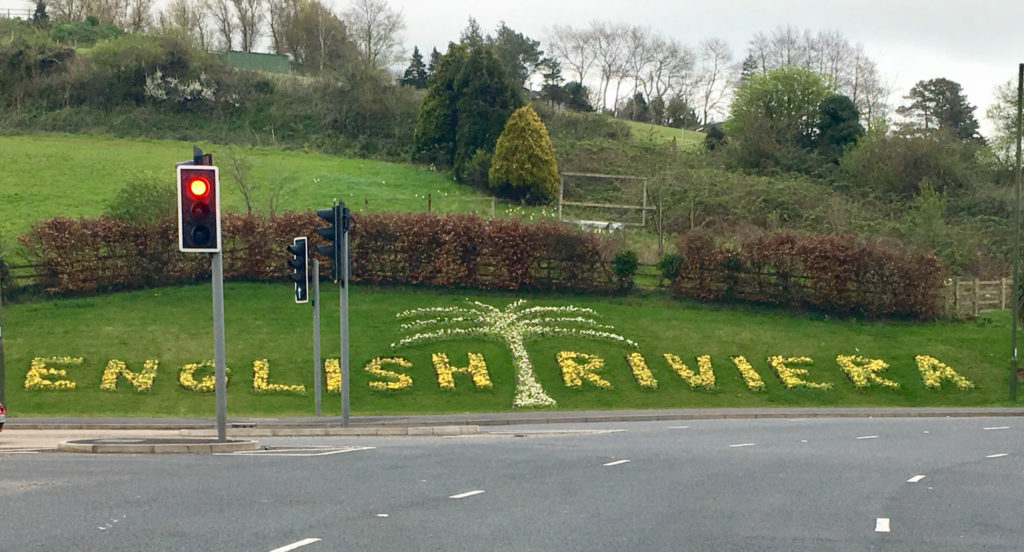
We retired happily to bed; they have a full day planned tomorrow.
